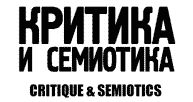RENAISSANCE INFLUENCE ON RUSSIAN CULTURE: DEGRADATION OF ICON INTUITION
The article examines the impact of changes in the culture of Western Europe during the Renaissance on the Russian culture. The content of this influence is called the changes in the Russian religious consciousness, which had the result of reduction in the authority of the Church hierarchy. The reason for this decrease of the authority referred to changes in the concept of divine energies. In this regard we consider the content of discussions about Tabor light and characterize two main positions in this debate. Changes in perceptions of the divine energies have led to changes in the perceptions of the icon. On a material of icon apology of John Damascene discusses the differences between an icon and an idol. The end of the article is a presentation of opinion of Dionysius the Areopagite on the church hierarchy as an icon of the Heavenly hierarchy.
Keywords: culture, Renaissance, Orthodoxy, paganism, icon, idol.
References:
Dionysius the Areopagite 2010 – Dionysius the Areopagite. Collected Works. The interpretation of Maximus the Confessor. Translation into Russian. Saint-Petersburg, 2010.
Gregory Palamas 1995 – St. Gregory Palamas. Triads for the defense of those who practice sacred quietude. Translation into Russian. Moscow, 1995.
John of Damascus 2008 – St. John of Damascus. On Holy Images. Translation into Russian. Saint-Petersburg, 2008.
Losev 1993 – Losev A. F. Essays on Ancient Symbolism and Mythology. Moscow, 1993. In Russian.
Losev 1998 – Losev A. F. The aesthetics of the Renaissance. The historical meaning of the aesthetics of the Renaissance. Moscow, 1998. In Russian.
Sazonova 2015 – Sazonova N. I. Visual Images in the Orthodox Liturgy. ΠΡΑΞΗΜΑ. Journal of Visual Semiotics. 2015. 1. P. 105–111. In Russian.
Issue: 3, 2015
Series of issue: Issue 5
Rubric: ARTICLES
Pages: 71 — 77
Downloads: 1375










